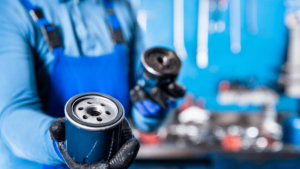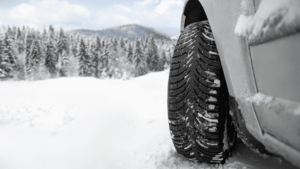10 quick ways to get your car ready for winter
As winter is not far away, it is very crucial to be prepared for sleet, snow, and heavy ice-covered roads. Moreover, if you’re planning for any trips during this season, it is obvious that you would love to avoid car breakdowns such as no-starts, frozen doors, and windows, engine freeze-up, and accidents.
QCCollision has a solution for you!
Spend some time preparing your car for this winter season. This would not only help you prevent unexpected breakdowns or road accidents. Wondering how to get your car ready for plummeting temperature and icy roads? Follow the quick and easy checklist of car maintenance as these might also help you cut off your costs on repair and gas.
-
-
-
Change the oil and oil filters
-
Changing the oil on regular basis will prevent the overheating of engines, increase fuel efficiency, prevent the build-up of grime, lower the risk of engine failure.

It is important to switch to synthetic oil before winters as the traditional oil becomes thick when the temperature drops off. Make sure you do not ignore changing oil just because you only drive in town. Also, be cautious about changing the oil filter too at recommended intervals.
-
-
Get a tune-up
-
Check your car’s owner manual for a tune-up and schedule it for the winter if you’ve not yet done it. Due to cold weather, there is a possibility of magnification of existing issues in your car like pings, hard starts, slow performance, and idling issues.
-
-
Check your car brakes
-
Brakes! These are the most important safety measure which you need to take care of. Make sure you test the brakes of your car before winter and snow. In fact, you must check before taking any or long trips.
Reach out to your auto body repair shop and ask your mechanic to check the brakes along with the emergency brakes. If necessary, replace the brake pads so you can easily stop on a dime no matter how slippery the road is.
-
-
Change the fluids
-
You must change the six different fluids before the temperature drops down in winter. The six fluids include coolant, transmission fluid, power steering fluid, washer fluid, brake system fluid, and suspension differential fluid. Do not forget to take advice from your mechanics before you change the transmission oil as it might depend on the age and wear of your car.
Make sure to keep the windshield reservoir full and in winters do use a cold-weather washer fluid that has anti-freezing components to prevent it from freezing. Also, remember to carry a bottle in the trunk as it will become handy when snow or road salt smears your windshield during winter.
-
-
Check the heater and defroster
-
Make sure you check the heater and defroster of your car during winter proactively. Don’t wait until you are in need of them. It is advised not to start your trip if you find that your heater or defroster is not working. Fix them before you take a ride.
-
-
Check your battery
-
The cold temperature could be tough on batteries. With the drop in temperature, the battery output reduces and engine oil gets thicker. This might make your engine even harder to start over. So, make sure to have a battery and charging system tested well for optimum performance.

In addition, check the cable and battery terminals of corrosion and corrections are tight. You can also clean the car battery to get rid of grease and grime.
-
-
Replace the wiper blades
-
Wiper blades must completely clear the windshield glass about each swipe. If yours have been leaving any streak or patched on your glass then it is worth replacing them with the new ones. In general, it should be replaced every 6 months.

If you’re traveling to a low-temperature region, then you can probably switch to winter wiper blades. It wraps the blade frame in a rubber boot to avoid the ice or snow buildup that could prevent good contact between the blade and the glass.
-
-
Check your headlights
-
In winter, due to daylight savings, you will get to ride more in the dark using the headlights. Make sure you test all the headlights, taillights, brake lights, turn signals, emergency flashers, and backup lights. If the lights seem to have less brightness than they used to be, then clean them with a special cleaner that won’t scratch the finish and if burnt out, replace them ASAP.
-
-
Check your tires
-
To have the best winter traction, switch your summer tires with dedicated snow tires. These tires will give you the best performance even on heavy snow and frigid temperatures on dry roads too.
In winter, it’s good to check the tire pressures periodically. As temperature changes, the tire pressure also fluctuates. To avoid unexpected bizarre make sure to carry the tested spare tires too.
-
-
Make sure your gas tank is full
-
During winter you can never predict when a sudden snow squall stretches your commute to hours on the road. It is always a safer choice to keep your gas at least half-filled every time you go for a ride as this would lower the risk of moisture formation in the gas-lined and freeze them.
If you have your gas-filled, then you don’t have to worry about such situations.Bonus
-
- Assemble an emergency winter kit. In winter, often we get surprised by unexpected situations like a sudden storm or stranded for a few hours that could slide off the icy roads into a secluded area. This is where the winter survival kit can be useful. Following is the list of things that you must include in your survival winter kit.
- Mobile phone which has rescue apps and important phone numbers, including family and emergency services, and car charger
- Drinking water
- First-aid kit
- Non-perishable snacks for both human and pet passengers
- Bag of abrasive material (sand, salt, cat litter) or traction mats
- Snow shovel
- Blankets
- Extra warm clothing (gloves, hats, scarves)
- Flashlight with extra batteries
- Window washer solvent
- Ice scraper with brush



